
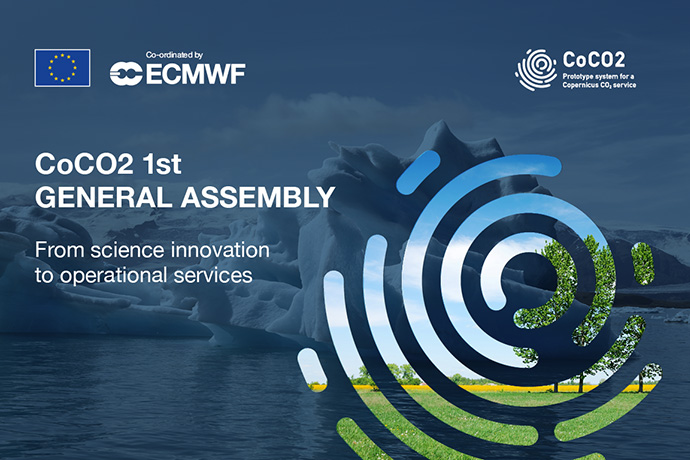
The ECMWF-coordinated Copernicus CO2 (CoCO2) project to build a prototype system to monitor anthropogenic CO2 emissions worldwide held its first General Assembly from 16 to 18 November.
The EU-funded CoCO2 feeds into an anthropogenic CO2 emissions Monitoring and Verification Support Capacity (CO2MVS) that is being developed as part of the EU’s Copernicus Atmosphere Monitoring Service (CAMS) operated by ECMWF.
CO2MVS will help countries to measure their progress towards meeting their Paris Agreement objectives by combining satellite and ground-based observations with computer modelling.
“The General Assembly showed the enormous progress that was made by all project partners and how the different activities are slowly coming together,” said Richard Engelen, the Project Coordinator of CoCO2 and Deputy Director of CAMS. “It also called for taking a step back to take another look at the bigger picture to meet the requirements of the CO2MVS development.”
CoCO2 General Assembly
The three year CoCO2-project, which started in January, brings together 25 partners from 14 European countries.
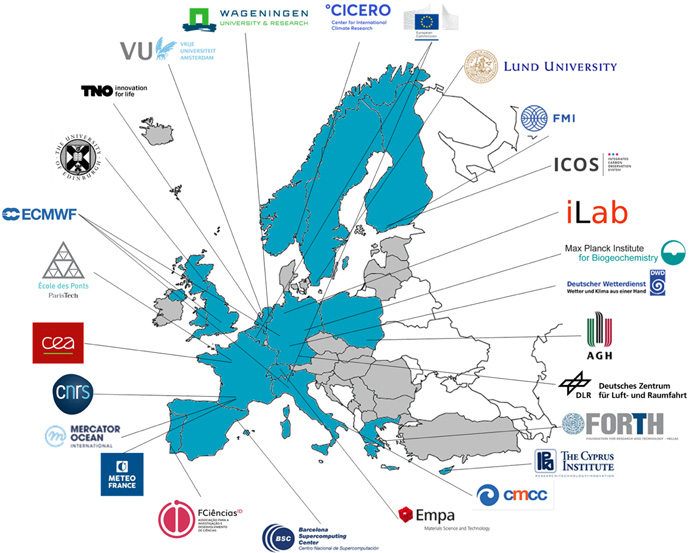
The CoCO2 partner countries (in blue) and additional ECMWF Member and Co-operating States in Europe (in grey).
The General Assembly was held online and was attended by more than 100 people on the first day and by about 75 on the second and third day.
The first day focused on the progress of the various work packages, showing the wealth of results that have already been achieved during the first ten months.
The second day was used for discussions about the requirements of the models and data assimilation systems. These include detailed prior information on underlying emissions and lateral flows of carbon, such as crops harvested in one country and used in another.
This was followed by invited presentations about related activities in Japan, the USA and Switzerland. The final day brought information about some related projects (VERIFY and ICOS Cities), outcomes of COP26, and feedback from the project advisers.
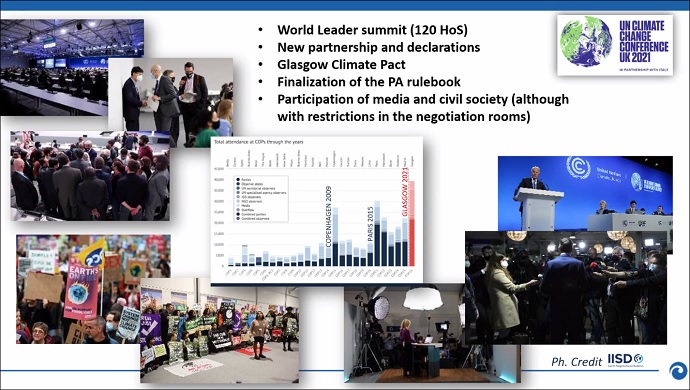
Outcomes of the UN Climate Change Conference UK 2021 (COP26) were presented during the CoCO2 meeting. (Slide by Lucia Perugini, CMCC)
All presentations are available on the CoCO2 website.
Progress towards CO2MVS
ECMWF is working in partnership with other bodies and experts, including the European Commission, the European Space Agency (ESA) and the European Organisation for the Exploitation of Meteorological Satellites (EUMETSAT), to deliver the first European CO2 Monitoring and Verification Support capacity (CO2MVS) on anthropogenic emissions.
Under the Copernicus Sentinel programme, ESA and EUMETSAT are developing a constellation of dedicated satellites that will measure concentrations of carbon dioxide and methane in the atmosphere with an unprecedented combination of coverage, detail, and accuracy.
These satellites will be able to observe the entire globe in just a few days. They will also be able to look at individual carbon dioxide and methane sources, such as power plants and fossil fuel production sites.
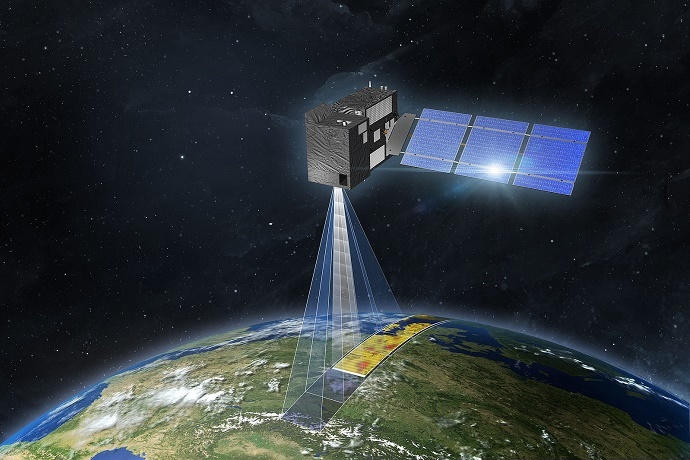
The CO2 monitoring capability will be supported by up to three satellites. (Image copyright: OHB)
The CoCO2 project is developing the prototype systems for CO2MVS, which will integrate all available information streams in a globally consistent way.
By combining satellite observations with the Earth system modelling and data assimilation capabilities of CAMS, the new CO2MVS capacity will provide consistent and reliable information that can be used to support policy- and decision-making with respect to anthropogenic CO2 emissions, at local, national and European level.
The main elements of the CO2MVS prototype are expected to be delivered in 2023, and the system should be fully operational by 2026.
CoCO2 has already supported the use of CAMS data to produce time series of CO2 fluxes for the AFOLU (Agriculture, Forestry, and Other Land Use) sector in several large countries or groups of countries around the world.
AFOLU fluxes are separate from fossil fuel CO2 emissions, which continue to go up. More information can be found on the new CAMS greenhouse gas microsite.
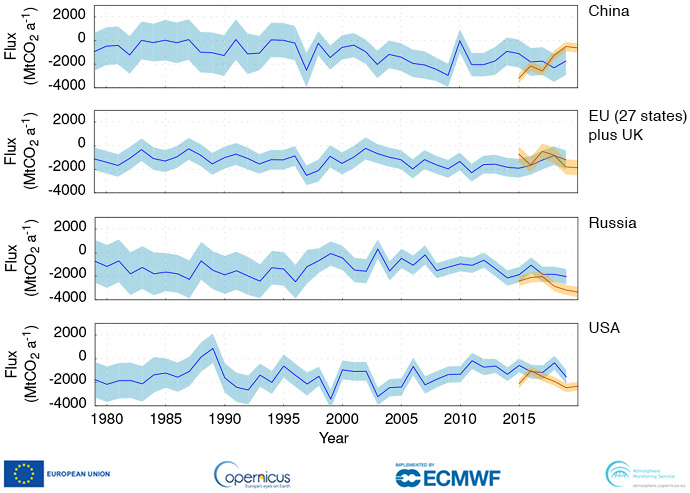
Annual-mean CO2 exchange between land and atmosphere for the Agricultural, Forestry and Other Land Use (AFOLU) sector in four large countries or groups of countries as estimated by CAMS using ground-based CO2 observations (blue line) and satellite observations (orange line). Positive values indicate that the AFOLU sector in that country is a source of CO2 to the atmosphere. The uncertainty of the estimates is indicated by the coloured areas. (Credit: CAMS/CEA)
Once CO2MVS reaches operational status, CAMS will be able to support countries, as well as regional and local authorities, with their reporting obligations. More importantly, it will provide them with a better understanding of the impact of their mitigation actions, allowing them to fine-tune policy in this area and adapt their actions, if necessary.
